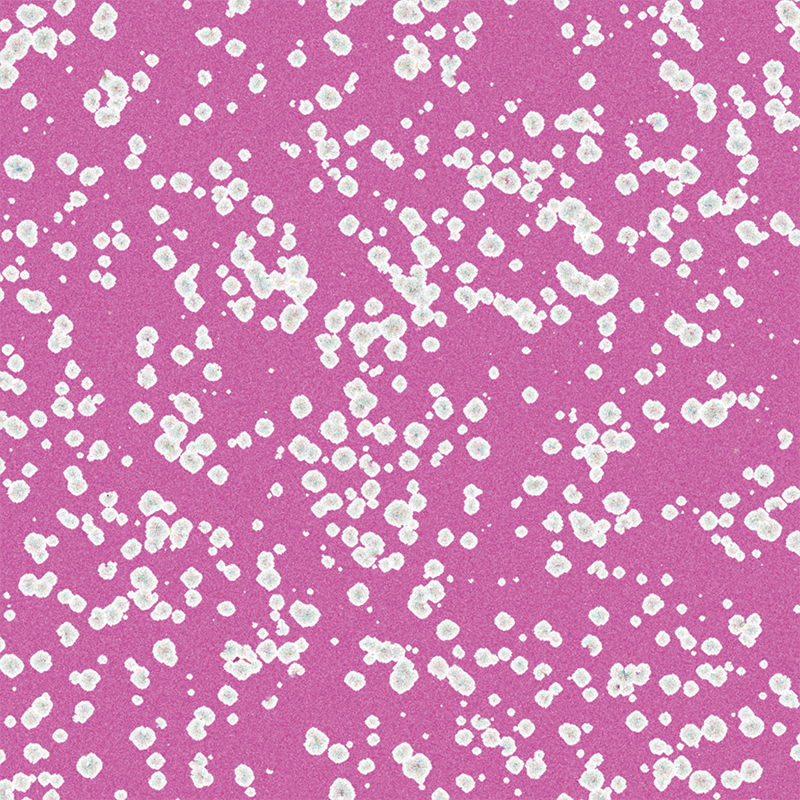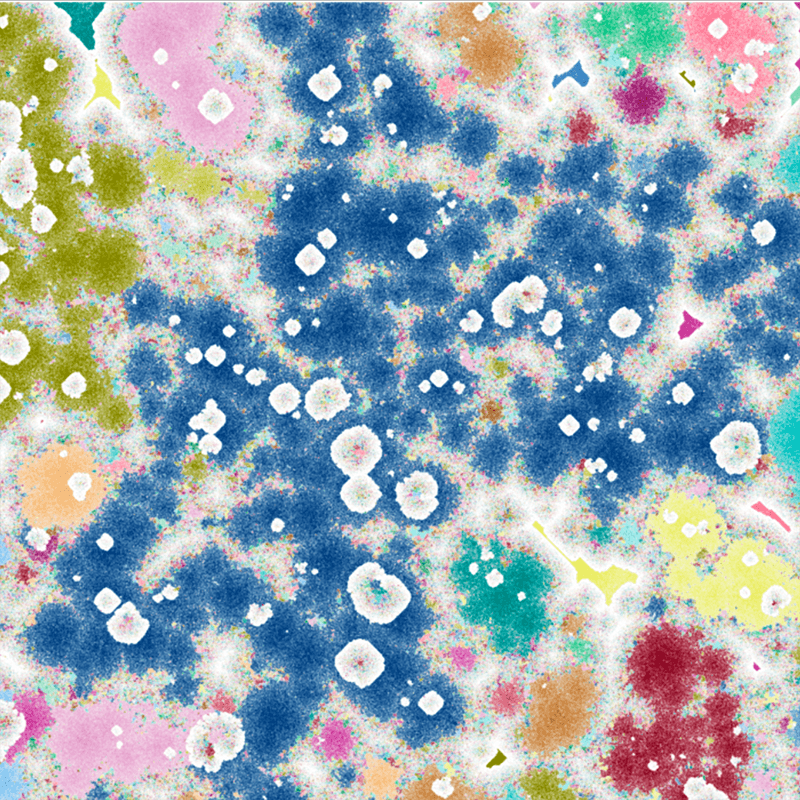The model implements a “forest” on a two-dimensional square grid of cells. Each cell can be in one of five different states: empty, tree, infected, source, or stone.
Implementation
Update Rules
In each time step, the cells update their respective states according to the following rules:
-
An
infectedcell turns into anemptycell. -
An
emptycell can become atreecell with probabilityp_growth. -
A
treecell can become infected in the following ways:- from a neighboring infected cell with probability 1-
p_immunityper neighbor, - via a random point infection with probability
p_infect, - via a constantly infected cell, an infection
source.
- from a neighboring infected cell with probability 1-
For the neighborhood, both the von Neumann neighborhood (5-neighborhood) and the Moore neighborhood (9-neighborhood) are supported.
Heterogeneities
As in the Forest Fire model, there is the possibility to introduce heterogeneities into the grid, which are implemented as two additional possible cell states:
source: these are constant infection sources. They spread infection like normal infected trees, but don not revert back to the empty state. If activated, they are per default on the lower boundary of the grid, though this can be changed in the configuration.stone: stones are cells that can not be infected nor turn into trees. They are used to represent barriers in the forest. If enabled, the default mode isclustered_simple, which leads to randomly distributed stones whose neighbours have a certain probability to also be a stone.
Both make use of the entity selection interface.
Infection Control
Via the infection_control parameter in the model configuration, additional infections can be introduced at desired times. The infections are introduced before the update rule above is carried out.

